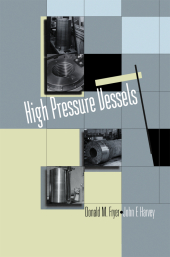 Neuerscheinungen 2012Stand: 2020-01-07 |
Schnellsuche
ISBN/Stichwort/Autor
|
Herderstraße 10
10625 Berlin
Tel.: 030 315 714 16
Fax 030 315 714 14
info@buchspektrum.de |

Donald M. Fryer, John F. Harvey
(Beteiligte)
High Pressure Vessels
1998. 2012. xiii, 216 S. XIII, 216 p. 235 mm
Verlag/Jahr: SPRINGER, BERLIN 2012
ISBN: 1-461-37744-7 (1461377447)
Neue ISBN: 978-1-461-37744-3 (9781461377443)
Preis und Lieferzeit: Bitte klicken
High Pressure Vessels is the only book to present timely information on high pressure vessel design for student engineers, mechanical and chemical engineers who design and build these vessels, and for chemical engineers, plant engineers and facilities managers who use them. It concentrates on design issues, giving the reader comprehensive coverage of the design aspects of the ASME High Pressure System Standard and the forthcoming ASME High Pressure Vessel Code. Coverage of the safety requirements of these new standards is included, as well as offering the reader examples and original data, a glossary of terms, SI conversions, and lists of references.
Preface. Nomenclature. Introduction. General. Economic considerations and cost reduction. Stress significance. Factors of safety and their optimum value. Stresses and deformation: Thin wall vessels. Thick wall vessels. Cylinders, spheres, and other shapes. Stresses and deflections. Shrink fit stresses in built-up cylinders. Other structural types. Effect of poisson´s ratio. Partial yielding. Autofrettage and Bauschinger effect. Thermal stresses due to temperature transients. Theories of material failure. Materials and environment. Ductile tensile test, strain hardening exponent, etc.. True and engineering strain. Stress/failure theories: tresca, von Mises, etc. Cyclic service influence. Endurance limit phylosophy. ASME code type fatigue curves. Problems with fatigue analysis. Toughness, quantifying it, and temperature influence. Material quality and crack initiation. Crack growth versus stress. Critical crack size and crack arrest. Environmental effects. Cumulative damage. Specific design and construction. Features of high pressure vessels. Openings and cross bores. Attachment and connection techniques. Closures: threaded and non-threaded. Stress concentration effects. Sealing techniques. Hazards and safety. General. Calculating estimated confined energy. Barrier sizing. An alternative. Basis for establishing examination period. Creating and examination program. Evaluation and record keeping. Analysis techniques: features and limitations. Traditional manual methods. Finite element studies. Iterative concepts. SI conversions. References. Index.


